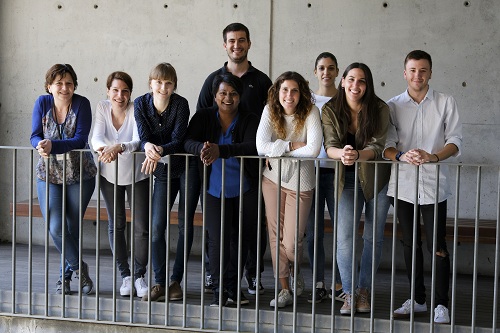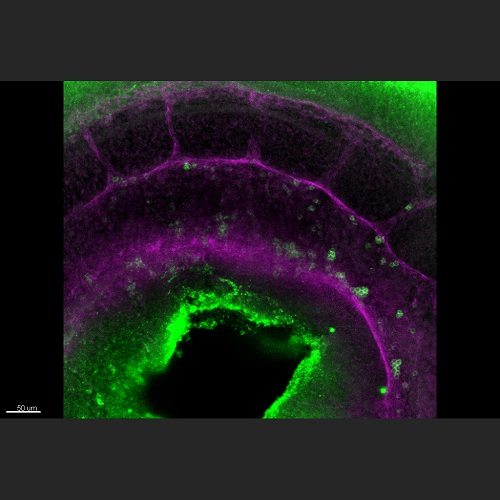
March 9th 2020 - Press release
Researchers at the Hospital del Mar Institute for Medical Research have led a study demonstrating how the relationship between two molecules plays a key role in the generation of these cells. The work has been published in The EMBO Journal.
Researchers from the Stem Cell and Cancer Group at the Hospital del Mar Institute for Medical Research (IMIM) have led a study in which they have been able to determine the role of two molecules, Dll4 and Notch, and the importance of their relationship in the generation of blood stem cells. This is a very important step in the search to find a viable method for generating this type of cell in the laboratory. The study, which included researchers from the universities of Tel Aviv, Edinburgh, the Sorbonne in Paris, and Cambridge, has been published in The EMBO Journal.

Image of the IMIM research group
The group that led the study is one of the few Spanish teams working in this field, and for years they have been making breakthroughs in their research into blood stem cells and generating these in the laboratory, in the field of regenerative medicine. Right now, "We can make erythrocytes, platelets, a lot of blood products in the lab, but we have never been able to make a cell that has the characteristics of blood stem cells", explains Dr. Anna Bigas, coordinator of the group and first author of the study. Being able to find a method for generating this type of cell in the laboratory would allow patients with diseases like leukaemia, or certain genetic pathologies that affect the blood, and who do not have a compatible donor, to receive a haematopoietic stem cell transplant. In many cases this is the only treatment possible.
The research that has just been published focuses on the role of two molecules, Notch and Dll4, and how they relate to one another in the process through which the body naturally generates blood stem cells. These cells are formed during the embryonic process and stop being generated once the process is over. In addition, the blood stem cells that are generated in the embryo come from the endothelium, the tissue that lines the inside of all blood vessels.

Reconstruction of a mouse embryo aorta (in lilac) where the blood cells that are forming are observed (green)
The researchers used mouse embryos to analyse the process by which endothelial cells become blood stem cells. And they have been able to demonstrate that the interaction between the two molecules, which the different cells express on their surface, is crucial. "If this cell interaction, produced thanks to the Notch and Dll4 proteins, is blocked, those cells that had not yet become stem cells are transformed into this type of cell", explains Dr. Bigas. In other words, "interfering with the interaction between these two molecules boosts the potential for these cells to become haematopoietic stem cells." The role of Notch in the process that triggers the generation, or not, of these cells was already known, but that of Dll4 was not. Nor was there any evidence of how important the relationship between the two molecules is in the process of blood stem cell formation.
The study was carried out using antibodies designed to block the Dll4 protein. The mouse embryo cells treated with these antibodies were inserted into adult specimens to test whether they retained their properties as blood stem cells. And this was a success. Now, further research must be done, but the researchers stress that this is not the only route involved in the process. It will have to be validated if it is to become a useful tool for generating blood stem cells in the laboratory from, for example, embryonic cells.
Parc Salut Mar
Passeig Marítim 25-29 Barcelona 08003
See location on Google maps
Phone: 93 248 30 00 · Fax: 93 248 32 54
Information request
© 2006 - 2025 Hospital del Mar · Legal notice and Privacy Police | Cookie Policy | Accessibility